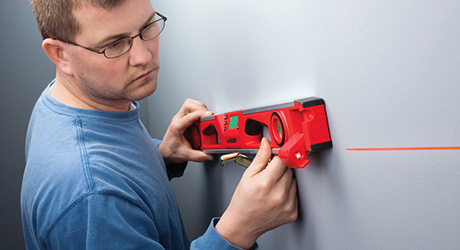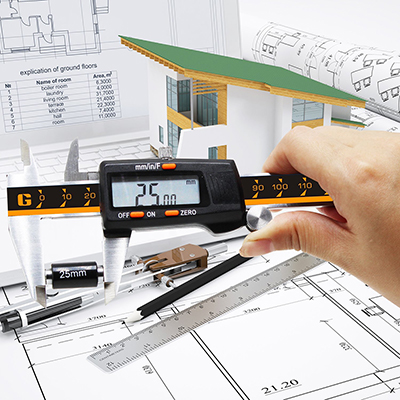How to Read a Micrometer

Last updated November 12, 2024
Pros depend on tools that can make exact measurements. Micrometers measure in increments of 0.001 inches (or 0.01 mm) for such precise readings as the thickness of washers, the width of bolts and more. This guide reviews the basics of micrometer reading.
Standard micrometers have three scales that measure 0.1 inch, 0.025 inch and 0.001 inch, respectively. Knowing how to read a micrometer begins with the two larger scales on the sleeve and finishes with the smaller scale on the dial or thimble.
Difficulty:
Beginner
Duration:
Under 2 hours
Table of Contents
How to Use a Micrometer
Read the Micrometer Sleeve
Read the Multimeter Dial or Thimble
Combine Your Readings
Tips for Using a Micrometer
More Tools. More Products. More Perks.
How to Use a Micrometer

Micrometers are instruments for mechanics and engineering Pros to take readings that would otherwise be too small to tell by sight.
There are two basic types of micrometers.
- Outside micrometers measure the external surface of an object, such as the thickness of a washer. Outside micrometers have a ratchet, a stationary anvil and an adjustable spindle to hold the object in place. Find the measurement by checking the sleeve and the thimble or dial.
- Inside micrometers take internal measurements of an object, like the width of a hole in a washer. Caliper-type inside micrometers have measuring jaws that can be placed into a space. Tubular and rod-type inside micrometers can be inserted within the space and extended to fit.
Know the difference between calipers vs. micrometers when making measurements. Calipers can take internal or external measurements as well as depth and thickness. They are known for versatility, range of size and ease of use. Micrometers are similar, but are designed for more specific, accurate and at times smaller measurements.
Take these steps before a micrometer reading:
- Confirm that the horizontal line on the sleeve lines up with the 0 on the thimble. If they do not align, the micrometer needs to be calibrated.
- Press the object you are measuring against your micrometer’s anvil.
- Tighten the device until the spindle is firmly pressed against the object and has clicked 2-3 times.
- If your micrometer has a lock lever, turn it to hold the object in place.
Pro Tip: Using a micrometer stand to hold the instrument in place can free your hands for making the measurements.
Read the Micrometer Sleeve

There are measurement scales on both the sleeve and the dial of the micrometer. The following steps review how to read a micrometer in inches.
Begin by reading the sleeve.
- Whole numbers printed on the sleeve scale represent 0.1 inch.
- Three small lines separate the whole numbers on the sleeve scale. These each represent 0.025 inch.
Read the whole number on the sleeve first and then the quarter marks. If the whole number is a 3 followed by two quarter marks, the measurement is 0.350 inch. If the number is a 5 followed by three quarter marks, the measurement is 0.575 inch.
Read the Multimeter Dial or Thimble

After you’ve read and recorded the measurement on the sleeve, check the dial or thimble, which measures in 0.001 inch.
Find and record the measurement on the dial or thimble that is closest to the sleeve measurement.
See the diagram below for an example.
Combine Your Readings

Once you have taken the measurements from every scale, combine them to determine your complete measurement.
In the example presented on the diagram, the last whole number on the sleeve is 3, followed by three quarter marks (0.075) and a 6 on the thimble. The measurements would be:
0.300 + 0.075 + 0.006
Add them together and your complete measurement is 0.381 inch.
Pro Tip: Repeat your micrometer measurements to confirm the readings are accurate.
Tips for Using a Micrometer

Here are some tips for using a micrometer.
Keep the surface of your micrometer clean of oil, dust or dirt to ensure a precise measurement. Use a soft cloth or dust rag to wipe down the spindle, anvil and measuring faces of the micrometer before and after use.
Micrometers are highly sensitive, so even changes in room temperature can affect the results.
When a micrometer is at the minimum setting, the horizontal line on the sleeve should align with the 0 on the thimble. If they do not line up, calibrate the micrometer with these steps:
- Find the adjustable wrench that came with the micrometer.
- Put the wrench in the small hole in the sleeve.
- Turn the sleeve until it aligns with the thimble.
Store the micrometer at room temperature and make sure the anvil and spindle are separate in the open position. Do not store micrometers with the anvil and spindle in contact.
Digital micrometers work the same as standard micrometers, but the measurements can be easily read on an LCD display.
Remove batteries from digital micrometers before storing them.
More Tools. More Products. More Perks.

Be more competitive and boost your bottom line with Pro Xtra, The Home Depot’s free loyalty program built for Pros. Sign up today to access the enhanced Pro Online Experience, built with the online business tools and time-saving features Pros need.
Learning how to read a micrometer allows Pros to find exact measurements for installation or repairs. Accuracy is key to professional work, so precise measuring instruments like micrometers can be essential.
Directly sync to QuickBooks® with a free Pro Xtra account and download your purchase history directly into your QuickBooks. You can set up an integration in fewer than 10 steps to manage all your purchases in one place.



























